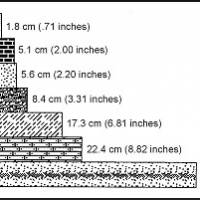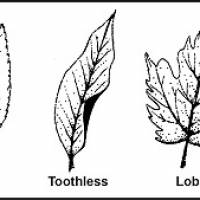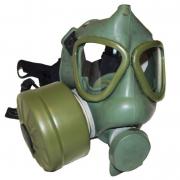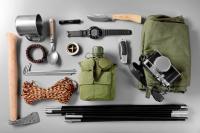Survival Tips

Survival Tips 1
CAMOFLAUGE STICK CONTAINER
Have you ever thrown away that old expended camoflauge stick container and thought it was worthless? I did many times without even thinking twice about it. But PFC Andrew Gudget's idea
sounds pretty good. He keeps a few expended containers for storing a few small items inside. He suggests you make mini survival kits out of one or more of them. Some small items you can store inside are:
- A. Sewing Kits
- B. Matches
- C. Fish Hooks and Bait (Lures?)
- D. Small Nails
- E. Aspirin
- F. Small Candle
Before you decide to put anything inside these containers, make sure you clean them out real good. Use an alcohol cleaner to remove every little bit of cammy. Also keep some tape or rubber bands around the ends of the tube to keep them from coming off, or glue one end securely in place.
COUGH SUCRETS CONTAINER
Here's another type of container you can use to store your little goodies or survival things. PFC Todd Wines suggests using an old Sucrets container. He scratches or sandpapers the old paint off and adds his own paint job. He says it fits nice and snug inside a first aid pouch, even with the first aid dressing still inside it. "Sounds like you can make a handy dandy first aid kit". To complete the packing just add a few band aids, aspirins and cough drops.
35MM FILM CONTAINERS
These are really fantastic little storage containers, and easy to come by for free. To acquire a few, all you need to do is go by your local photo development center/store or your military on post photo shop. Any of these places will probably give you these black containers for nothing. These sealed containers along with the lids work perfectly, no matter what small items you decide to store inside, and they will always stay dry and snug. Some useful items you may want to consider storing inside:
- A. Short Fat Candles
- B. Aspirin/Vitamins
- C. Salt/Pepper/Seasonings
- D. Survival Items
- E. Creams (Vaseline)
- F. Tiny Compass/Mirror
NBC M258 DECON KIT CONTAINER
Like the other containers mentioned before, you have a thousand uses to choose form. I personally prefer to use them as a soap dish and cassette tape storage container (separately of course). They keep the we soap locked inside until the next time and the cassette tapes clean and dry no matter what the weather conditions are in the field. You can store up to 3 cassette tapes inside the M258.
ON CONTAINERS
I posted this to give people ideas on using containers to store things while in the field, but to also get you all thinking about using other containers for larger things also. I like using transparent storage bins to hold my supplies in. Makes a much neater storage area, easy to see contents inside, and much easier to pack up in a truck if you need to bail. Another thing to do is label the containers with a piece of tape and a marker of some sort.
Can any of you think of other makeshift storage containers to use? I can think of several, both for the field and at home. One that I'll mention for the field is the large freezer storage bags. The ziplock kind with the pull tab. That one's obvious.
Treatment of head lice
If TSHTF someday, I think this will become a common occurance amongst refugees.
Chris Gallo has stated that using baby oil on lice infested hair works. It smothers the lice, they drop off dead, end of story.
Janet Oldham Zarmbus stated that mayonaise also worked for her friend's daughter, and that old
timers used to use coal oil. She wonders if using peanut butter would also work? (Yes) Countryside mentions that using vinegar works.
- Shampoo Hair
- Dress hair with Vinegar
- Cover with small towel, damp with vinegar.
- Add covering towel turban
- Keep on overnight
- Comb nits out in morning. The Vinegar will have dissolved the "glue" that held the nits to the hair shafts.
- Clean all bedding, hats, etc.
- Remove your child form source of lice!
Making Vinegar
Vinegar is made like sourdough or yogurt; use a little of the old to make a fresh batch. Vinegar is fairly easy to make at home. The trick is getting the acidity right. As far as taste, it matters little. But for pickling, you need vinegar with a 5% to 6% acidity. White distilled vinegar is made from the distillation of alchohol spirits from corn, rye, and barley malt. It begins with the mashing of grains and adding water. Yeast is added, causing fermentation, which changes the sugars to alcohol. The alcohol is extracted by boiling the mash. The alcohol vaporizes and the vapor is forced into cool water, in which it condenses. Oxygen transforms the alcohol into vinegar. To make distilled vinegar, one must first learn how to make alcohol, an art in itself.
Apple Cider Vinegar is much simpler. Simply open a jug of fresh cider, pour off a pint and add a little "mother" (the whitish clump of bacteria that forms on the surface of natural vinegar) from a previous batch. Then let it set at 70 degrees for about a month. Sniff the jug, then taste it a
bit. You'll know when it's done. To use it in pickling, you must test the acidity, as vinegar needs to be in the 5%-6% range. You can get an acid testing kit from wine-maker companies.
You can keep saving the "mother" from one batch to the next, much as you save a favorite sourdough starter. You can also make vinegar from peaches, grapes, or most any fruit by first making pure juice, much as cider is made from ground and pressed apples, and fermenting it.
























